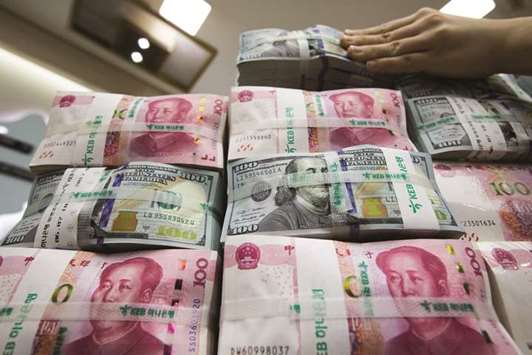China’s recent introduction of yuan-denominated oil futures and the country’s planned move to pay for imported oil in its own currency, yuan, or renminbi, instead of US dollars – replacing the so-called petro dollar with the ‘petro yuan’ – could have potentially huge implications for the world economy, including the Islamic finance world.
Attempts to break the dominance of the US dollar as obligatory currency in the global oil trade are not new. Libya’s late Muammar Gaddafi had tried it and failed, so did Venezuelan and Iranian leaders, but this time, odds are in favour of China, which can fairly easily exploit the current US sanctions on Iran and the erratic trade policy of the current administration in Washington to reach a new dimension for its currency.
According to a Reuters report, a pilot programme for yuan payment for oil could be launched as early as the second half of this year, and the long-term impact could be significant given the fact that China is the biggest importer of crude oil and the second largest consumer in the world, which makes it a key determinant of global oil prices.
The impact of the petro yuan on Islamic finance lies primarily on the changes in trade it would have on China’s Islamic trading partners in Southeast Asia, most of all Malaysia, and the Muslim countries in Central and West Asia and the Middle East and North Africa, which are in the process of being connected by China’s One Belt, One Road initiative, also known as New Silk Road. Adding to that, a key oil exporter in the region, Iraq, has already accepted the yuan as payment for crude oil shipments and Pakistan’s is accepting it for bilateral trade and investment, which increases the yuan money supply in those jurisdictions where Islamic finance is central.
Since a considerable part of infrastructure along the New Silk Road is going to be funded through Islamic finance structures such as sukuk and similar instruments, and the China-backed Asian Infrastructure Investment Bank, in which all six Gulf nations are members and investors, plays a leading role in funding the initiative, it will not be a question of whether, but when the first yuan-backed Islamic finance transactions will emerge. This will include a growing number of international yuan-denominated sukuk and other instruments, including tawarruq, or commodity murabaha – which is basically an Islamic futures contract –, for yuan-backed energy deals.
And the impact will be considerable, given the fact that the One Belt, One Road schedule includes investments more than $1tn in infrastructure along the way in roads and railroads, ports, energy plants, grids, manufacturing sites and free trade zones, through 60 countries spanning over Europe, Africa and Asia.
The expected rising influence of the petro yuan on the global economy is also a key factor as to how oil exporting Gulf nations will have to adapt their oil trade with China and other nations that potentially start shifting away from the US dollar for political or pragmatic reasons. This would also impact the Islamic finance and banking system in each country and, of course, cross-border and international trade finance and the GCC’s debt market in the future.
Analysts even expect the petro yuan could trigger a global disruption of the financial system, including Islamic finance, over the coming five years in case China succeed with its plans of making the yuan a new globally accepted reserve currency. In fact, all it needs is the support of the world’s largest oil producers Russia and Saudi Arabia to go ahead.

An employee arranges genuine bundles of US one-hundred dollar banknotes and Chinese one-hundred yuan in an arranged photograph at the Counterfeit Notes Response Center of KEB Hana Bank in Seoul (file). The impact of the petro yuan on Islamic finance lies primarily on the changes in trade it would have on China’s Islamic trading partners in Southeast Asia, most of all Malaysia, and the Muslim countries in Central and West Asia and the Middle East and North Africa.


